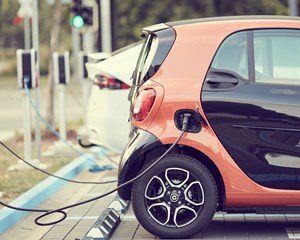Bristling to work
豎著工作
In tests with a number of unnamed battery companies, Dr Boulanger says VACNT electrodes achieved an energy density of 500wh/kg in one battery and up to 1,400 watt-hours per litre in another. This is roughly double what a typical Li-ion battery can manage in terms of weight and volume respectively. "We have done that very easily," he adds, "so we believe there is more room for improvement."
布朗熱博士稱,在與一些未具名的電池公司的測試當中,VACNT電極在一種電池中達到了500wh/kg的能量密度,在另一種電池中則達到了每升1400瓦時的能量密度,這大概是普通鋰離子電池在重量和體積上的兩倍。他補充道:“這一點我們很容易就做到了,所以我們相信還有很大的改進空間。”
One firm that NAWA does admit to working with is Saft, a large batterymaker owned by Total, a French oil giant keen to diversify from fossil fuels. Among Saft's customers are several Formula 1 teams which use some electric power in their racing cars. Saft has also teamed up with PSA group, a big European carmaker, to manufacture batteries for electric vehicles.
NAWA承認有合作的一家公司是“帥福得”,“帥福得”是想要從化石燃料轉(zhuǎn)向多元化的法國石油巨頭道達爾旗下的一家大型電池制造商。Saft的客戶包括幾支F1車隊,他們的賽車要使用電力。“帥福得”還與歐洲大型汽車制造商PSA集團合作,為電動汽車生產(chǎn)電池。

Naturally, the new device's success will depend on the cost of manufacturing it. NAWA is already constructing a mass-production line to make VACNT plates for its latest supercapacitors. The process used, which grows nanotubes on both sides of a roll of aluminium foil, would, says Ulrik Grape, NAWA's chief executive, transfer easily to an existing battery-production line and might even reduce battery-making costs. He expects the first versions of the supercapacitor-battery hybrids to be in production by 2023.
當然,新設(shè)備的成功將取決于它的制造成本。NAWA已經(jīng)在建設(shè)一條大規(guī)模生產(chǎn)線,為其最新的超級電容器生產(chǎn)真空極板。NAWA的首席執(zhí)行官葛衛(wèi)凱稱,這種在一卷鋁箔的兩面都種植納米管的工序可以很容易轉(zhuǎn)移到現(xiàn)有的電池生產(chǎn)線上,甚至有可能降低電池的制造成本。他預(yù)計第一代超級電容-電池混合動力車將于2023年投產(chǎn)。
Whether such hybrid storage will be able to compete with conventional Li-ions remains to be seen. Li-ion batteries have the advantage of incumbency, and batterymakers have invested billions of dollars in huge "gigafactories" to turn them out in droves. Yet, for all the hype surrounding electric cars, doubts about Li-ions linger in many customers' minds. Range-anxiety, recharge rate and cost all combine to induce a hesitation to reach for the credit card. Mixing the spice of a supercapacitor with the stamina of a battery might overcome at least the first two of these objections, and thus, at last, truly launch an era of carefree electric motoring.
這種混合儲能技術(shù)是否能與傳統(tǒng)鋰離子電池競爭還有待觀察。鋰離子電池具備市場主導(dǎo)優(yōu)勢,電池制造商已經(jīng)投資數(shù)十億美元建立了巨大的“超級工廠”來對它們進行批量生產(chǎn)。然而,盡管對電動汽車的大肆宣傳,對鋰離子電池的疑慮仍縈繞在許多消費者的心中。里程焦慮、再充電速度和費用所有這些因素都會讓消費者猶豫要不要買它。將超級電容器的爆發(fā)力和電池的耐力混合起來至少可以克服上述兩個障礙,從而最終開啟一個真正無憂無慮的電動汽車時代。
譯文由可可原創(chuàng),僅供學(xué)習交流使用,未經(jīng)許可請勿轉(zhuǎn)載。











